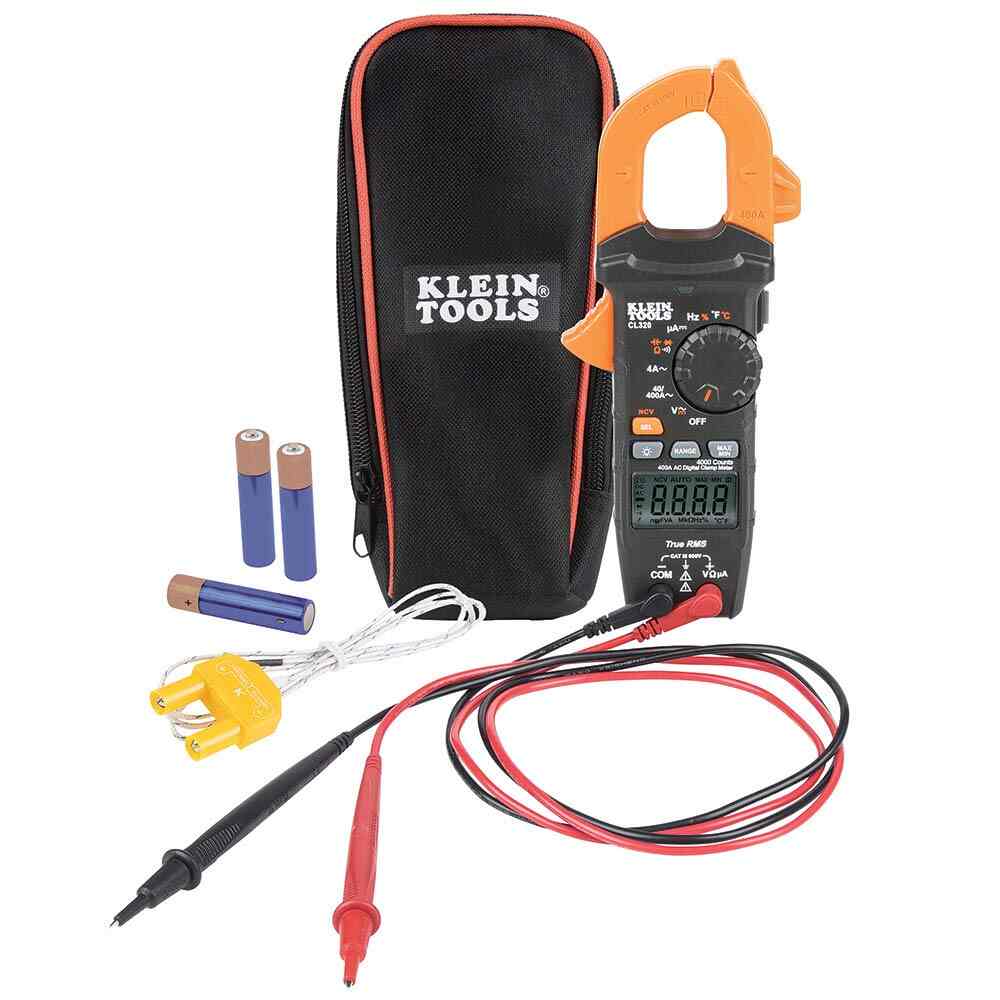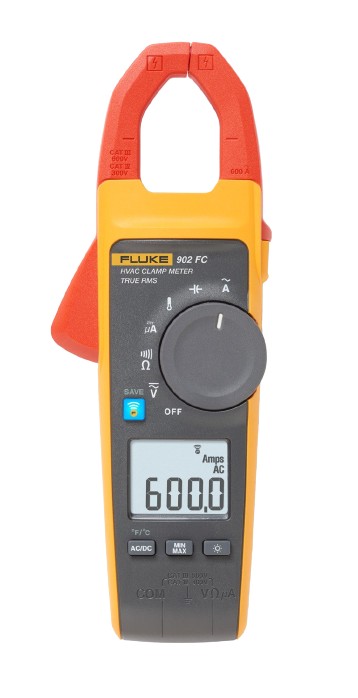A clamp meter for HVAC is a common need for users working on High-voltage AC circuits and lines. We must rely on something other than a standard clamp meter for the purpose.
We need a clamp meter that has extra safety for High-voltage AC (HVAC). Additionally, the user feels comfortable with the use of the clamp meter.
Luckily, brands addressed this problem. They designed a special and the best clamp meter for HVAC. These clamp meters are more safe and accurate than common clamp meters.
Unfortunately, a few brands designed clamp meters for the same purpose that do not fulfill the need. This turned out to be hazardous and life-threatening for electricians.
Besides, we also recorded low accuracy of these clamp meters- nominally designed for HVAC.
But don’t worry…
Here we help you to pick the best clamp meter for High-Voltage AC lines. Besides safety, these clamp meters are accurate and durable for specific users.
So stay with us…
Choosing the best Clamp meter for HVAC
Once we get a proper clamp meter for HVAC, we can easily resolve problems occurring in High-voltage AC lines.
Being an engineer, we witnessed Klein CL-320 and Fluke 902 FC excellent clamp meters for HVAC. Both belong to trusted and tested brands. Both are common among High-voltage AC electricians. After all, these clamp meters are accurate, durable, and safe to use in the scenario.
But there are many other clamp meters to trust on. Hence, we made the following checklist for you to look for the best clamp meter for HVAC.
a. Current Range
The current rating should be as high as one can afford. Commonly, 400Amp is an excellent value. However, if we can get a hand on higher values of current, it would be good.
The higher current value promises us more freedom of measuring and safety of instruments. Resulting in low economic loss.
b. AC/DC Measurement
The DC is accompanied by high-voltage AC. Often, we generate AC from DC or vice versa. Hence, we need a clamp meter that can measure both AC and DC currents.
This factor is crucial and must be checked. Otherwise, it will cost you an extra instrument to measure DC.
c. CAT Rating
As clamp meters are already considered safe, we need extra safety for HVAC. For circuits, CAT-III (1000V) would be fine. If there is CAT-IV (600V) safety, it will give us another layer of safety.
Here I must mention that for HVAC lines, the Safety category should be as enhanced as we need.
However, the above-mentioned safety is generally reliable in the field.
d. Temperature Measurement
As obvious, high voltages produce heat in the system. We need to equip ourselves with the obstacle of temperature.
A good clamp meter for HVAC must measure temperature. This measurement is differential and probes are provided for the purpose.
It makes us safe and detects problems at a high pace.
e. Durability and Sustainability
Physical toughness is crucial for our instruments. The best clamp meter for HVAC must be tough enough to sustain significant pressure and shock.
Moreover, it should last for its prescribed duration. Meanwhile, its accuracy must be intact.
f. True RMS Capability
Necessarily, a clamp meter must have to measure sinusoidal and non-sinusoidal current. For this purpose, the capability of True RMS is a necessary factor for a clamp meter.
High voltages fluctuate in a circuit (abrupt up and down of voltages). This damages devices and must be removed.
A clamp meter with True RMS capability can detect these high currents.
g. Additional Functions
We love an instrument with auxiliary functions. However, some functions are basic even being auxiliary.
Measuring resistance (to curb current and stop heating), voltage (to get a clear picture of the circuit), and auto-ranging (to reduce workload) are some of the important functions.
Additionally, we witnessed other minor functions. The user has a choice to either consider it or not.
These are some basic parameters to consider while getting the best clamp meter for HVAC.
Without any further delay, let’s see through our list of the best clamp meters for high-voltage AC.
List of Top Clamp Meters for HVAC
We kept the above factors in mind and made the following list for users.
Let’s go through it…
1. Our Selected Klein CL-320
The Klein Tools designs some of the best clamp meters. Among them, Klein Tools CL-320 (Amazon Link) is specially manufactured to keep HVAC in check.
This model is compatible with high-voltage AC circuits. It is durable and safe to use. We witnessed many HVAC electricians using this model.
Let’s study why it is so good…

The Good
AC and DC can be measured easily: This model is capable of measuring both AC and DC.
The clamp jaw is integrated with NCVT: The clamp jaw, along with its basic functions, tests voltage through the function of Non-contact Voltage Testing (NCVT).
The display gives a well-defined reading: Additionally, the backlight provides us freedom to work at night.
The weight of 682 grams (0.62 pounds) enhances portability: Obviously, the clamp meter has to be portable. Here, its size and weight are convenient and durable enough for us.
True RMS function gives us more freedom of reading: As we mentioned earlier this function is crucial for a good clamp meter, hence it is available in this model.
The clamp jaw opens in the center rather than in the end: We must have a comfortable position for the clamp jaw opening for physical connectivity.
Additional functions help us economically: We can measure Resistance, Capacitance, and frequency through this model.
Temperature can also be accurately measured: We can measure temperature through a differential probe provided with CL-320.
Auto-ranging reduces workload: Manually selecting through a range of currents is troublesome in the workspace. Hence automation is installed.
The Bad
The CL-320 fails to measure DC voltage. For this purpose. We should rely on other instruments. Although, it does measure DC.
Besides, some of its users complained about the consumption of batteries. But it is not verified.
Hence, “not measuring DC voltage” is the only flaw in its function.
The Downright Ugly
Although this model is light, it is not suitable for pockets. The main instrument (without jaw) is dimensionally fit, but along with the clamp jaw, it is hard to fit in a pocket.
2. Also Great: Fluke 902 FC
The Fluke is widely considered one of the trusted brands. The model Fluke 902 FC is its special design for HVAC.
We found this model the best clamp meter for HVAC. Fluke 902 FC is a simple, durable, and to-the-point instrument. Users are not bothered with extra tiresome steps.
It fits our need for safety and accuracy. Along with other things, approximately all qualities of a good clamp meter accumulate in it.
Let’s delve into some of its basic features.

Salient Features:
- Amazingly, connecting through Bluetooth with smartphones gives remoteness in reading and extra safety.
- Like other good clamp meter, it measures true RMS value.
- The current rating for AC is 600Amps (only Low DC currents are measured)
- The range of measuring resistance is about 60k-Ohm
- Minimum and maximum readings are toggled with the stroke of one push button.
- This item weighs 419 grams. Which is light enough for fieldwork.
Summing up, Fluke has designed Fluke 902 FC(Amazon link) for HVAC with extra care on safety and durability. Electricians and engineers trust this clamp meter. Its durability and sustainability are highly praised. We are confidently selecting this model for our students and clients.
3. Also Great: UEi DL-429D
Another best clamp meter for HVAC is UEi DL-429D. This model is comparatively new and consists of more options than previous models.
We can use DL-429D for research as well as fieldwork. Starting from measuring AC/DC to testing a diode, all related functions are included in this model.
We are safe in saying that this clamp meter has more freedom in data reading. All options are selected through push buttons.
Let’s study this in more detail about DL-429D…

Salient Features:
- The current range is about 600 Amps for AC and 2000 micro Amps for DC. These values are quite persuasive.
- CAT-III safety of 600V is enough for our use.
- DL-429D also measures differential temperature to counter heating up.
- Amazingly, we can read data through smartphones by using its applications.
- As mentioned earlier, it is more like an all-in-one clamp meter, as it has many extra features.
- A weight of 1.1 oz (approximately 32 grams) makes it the lightest clamp meter. Hence it improves its portability.
In short words, we are saying boldly that UEi DL-429D (Amazon link) is an all-in-one HVAC clamp meter. Our main point of safety is focused enough that we can remotely take a reading of dangerous currents.
The cost may sound steep. But when we go through its functions, the cost sounds quite reasonable.
Conclusion
Summing up our discussion, the best clamp meter for HVAC is the one that consists of the following factors:
- Maximum current range
- Measuring both AC and DC
- Good safety rating
- Measuring differential temperature
- Durability and sustainability in harsh conditions
- Gives true RMS reading
- And…
- It has many relative additional functions.
Upon inspecting, we summarize that Klein Tools CL-320 (Amazon link) suits the best in the mold of these factors.
Along with the above factors, we kept the record of users in check while ranking it. It aptly fulfilled its promises of durability and accuracy.
After all these qualities, this model is quite safe to use. Moreover, the price is quite reasonable.
Stay with us for more amazing blogs on electronics.
Good luck…
Questions
Q1: What do you mean by “high voltage”?
The term “High voltage” is quite diverse. It changes its meaning from laboratory to fieldwork. Sometimes, low voltages are considered high for one field and vice versa.
However, voltages above 600V are considered high voltage in general terms. Be advised, these voltages are quite dangerous.
Q2: Why do we need a special clamp meter for HVAC?
This question is repeatedly asked. As we mentioned HVAC is quite dangerous and life-threatening. Hence we need more safety and our instruments need to be more economical and accurate.
A standard Clamp meter cannot give us the amount of protection we need. Along with safety, these standard clamp meters lose their accuracy during a stand-off with HVAC.
Q3: Do we need any extra steps with measuring HVAC?
Of course Yes. Although we have the best clamp meter, it does not mean that we should ignore every precaution.
There is proper gear for electricians of HVAC. This gear has extra safety than the gear of standard electricians.
Along with this gear, we must be careful about placing the clamp jaw with the current carrying wire.
Q4: Can I do stuff with HVAC as a DIY enthusiast?
Here I am going to disappoint you. You should not mess with HVAC as a beginner (even though you might have the best clamp meter for HVAC). A qualified and licensed instructor is a must while studying HVAC.
Even the qualified staff is careful with the high-voltage AC. so I advise you to rely on a good instructor.
Q5: What is NCVT?
A non-contact voltage tester is a function in advance clamp meters that tests the voltage in a conductor.
Generally, it is another type of instrument. However, manufacturers have augmented it with different instruments to improve the performance of their instruments.
Additionally, NCVT warns us about the voltage in a conductor.
Other useful posts:
